Description
Pinguicula essereiana belongs to the Lentibulariaceae family and is native to the humid regions of Mexico. It takes on various colors depending on the environmental conditions in which it is grown.
Origin:
Mexico
Description:
- Climate: subtropical (Mexican Pinguicula)
- Life-cycle: perennial (Winter dormancy)
- Shape: prostrate
- Leaf and flower: It takes on various colors depending on the environmental conditions in which it is grown. Purple flower.
Additional info:
For more info & photos visit our blog and our page Facebook and Instagram.
Scope of delivery
- Vigorous plants, repotted in the current season, in high-quality soil
- Brick-coloured pot made of recycled plastic (6.5 cm diameter)
- Care guides.
- Free access to our plant doctor care service.
Care instructions
How we grow Pinguicula?
In-vitro plants are acclimated in a Grow Chamber with controlled temperatures and humidity. This indoor setup ensure an easy adaptation to extra-vitro condition, guaranteeing the best conditions for plants in this delicate stage. All plants available at the Diflora shop have been acclimatised for at least 3 months. We grow Pinguicula indoors all year round at a temperature of 20°C and a photoperiod of 16h. Plants are placed under 4,000/5,000 lux produced by LED lights with a colour temperature of 6400K. It is watered from below and left without water for a day before each new watering. Like most carnivorous plants, we use distilled water produced by our reverse osmosis system.
Lighting:
For Mexican Butterworts it is ideal to place them in a shady area (veranda, porch, under large trees, etc…) or using shade cloths. It’s important not to place them in direct sunlight, they prefer partially sunny growing conditions.
Watering:
Mexican varieties can be kept with a few centimeters of water in the saucer when they have carnivorous foliage in spring, summer and autumn. When the rosettes turn into small succulents in winter, keep the soil dry, watering it only lightly from time to time. As with other carnivorous plants, it would be best to use only distilled water or water with a low mineral salt content (condensation water from the air conditioner or dehumidifier). Alternatively, however, these Pinguicula can also be watered with tap water left to decant for 24 hours.
Substrate:
Pinguicula generally grow in alkaline, nutrient-poor soils. Some species have adapted to live in other soil types, such as pure chalk compounds (Pinguicula gypsicola and other Mexican species) or vertical rock walls (most Mexican species). We recommend the Pinguicula substrate we have developed and tested for optimal growth of Mexican Butterworts.
Seasonality and temperatures:
Mexican butterworts have a winter dormancy that is marked by a change in the leaves from their carnivorous type to a tighter, more succulent leaf. When the Pinguicula has formed these narrow leaves, you can remove the saucer and stop watering as described above for the dormant period. Alternatively, they can be grown in an indoor terrarium with artificial lighting. Mexican Butterworts do well in terrariums, greenhouses and windowsills.
Additional info:
For more cultivation information visit our care guides or use our plant care support by writing to ilpigliamosche@diflora.it
Source
Diflora started the in-vitro propagation of this Pinguicula from plant parts. Micropropagation allows the preservation of the mother plant genome avoiding contamination and genetic variation caused by traditional pollination followed by seeds production.
Trapping technique
Pinguicula catch mainly small flying insects using sticky modified trichomes placed all over their leaves. These trichomes secrete droplets of water and polysaccharides attracting insects that are searching for sugary substances, like nectar. As the unawares visitors fatally fly on those sweet and lethal leaves, they stay glued and unable to fly away. It is caused mainly by droplet viscosity. Slowly, the dense liquid of the nearby trichomes wrap the insect causing a macabre destiny for the unlucky victim: the tracheas, respiratory holes placed on the surface of the exoskeleton of insects, are obstructed causing their death by suffocation.
| Cultivation | |
|---|---|
| Lighting Conditions | |
| Best Season | |
| Pinguicula – Special Features |

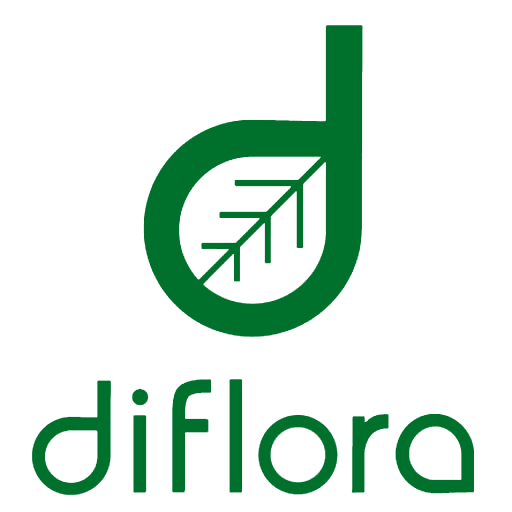
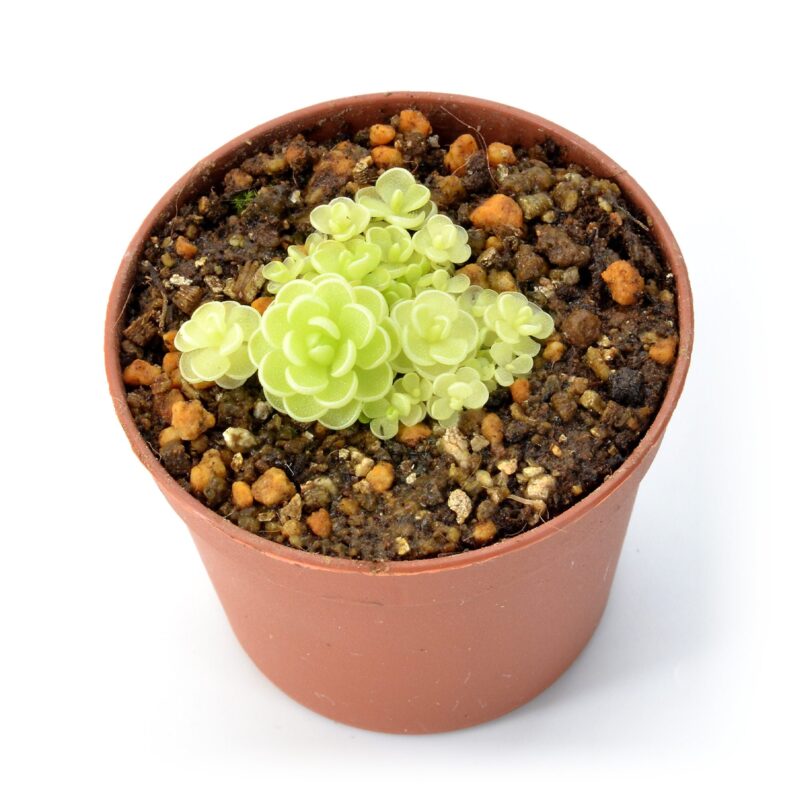




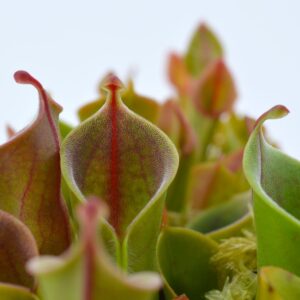

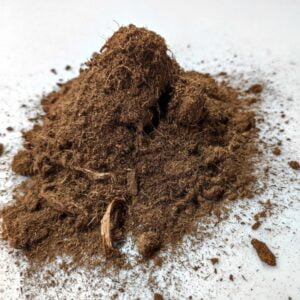


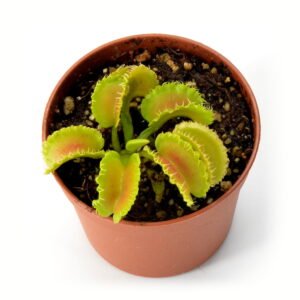
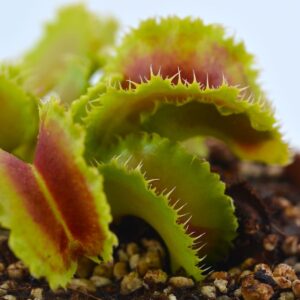
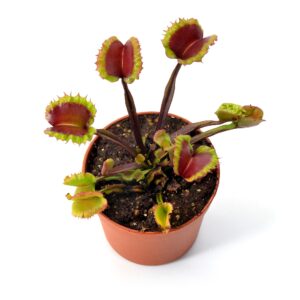


Reviews
There are no reviews yet.